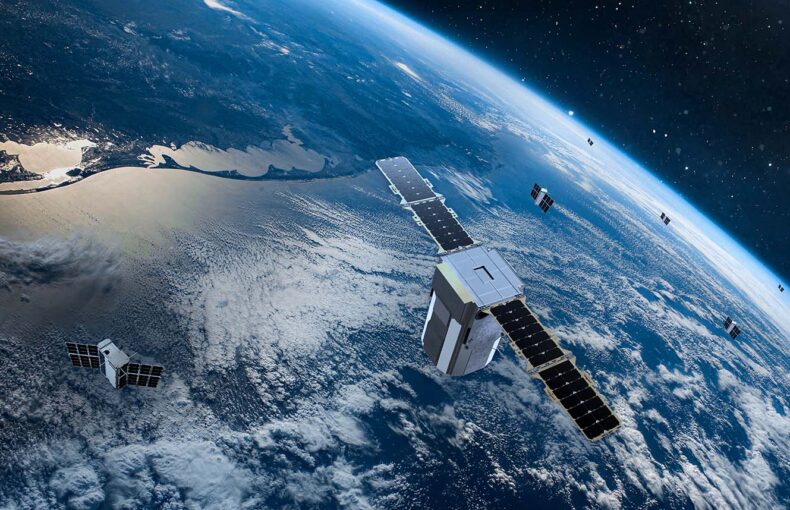A parallel universe exists and it’s called data
The rise in partnerships marks an early milestone in a historic journey where data transforms how we view our world, so what’s next?
We capture more data about our world than ever before. Satellites and sensors track everything from goods moving through factories to trade winds circling overhead. But even in a digital world, people are vital to unlocking data’s full potential. Experienced data service partners use this multiplying resource to help companies improve models, discover competitive advantages, and eliminate inefficiencies. The future of data is in targeted partnerships.
Data the whole world over
We can see more of what’s happening on our planet in greater detail and faster than ever before. And it’s thanks to advanced data collection.
Right now, satellites and sensors are capturing information from empty stretches of ocean to busy city corners. Better yet, the data is increasingly comprehensive and continuous, and it will only improve as hardware proliferates alongside software developments.
“It’s as if the world is finally accessible to us from a data perspective,” said James Rivett-Carnac, an engineering lead at Spire.
These developments promise more data—a lot more. Our current data footprint is about 40 zettabytes, or 40 trillion gigabytes. By 2025, this will have more than quadrupled to an astronomical 175 zettabytes, according to an estimate from the International Data Corporation.
To put that number into perspective, loading all of that information onto a stockpile of standard 64-gigabyte smartphones would require about 27 times more devices than there are stars in the Milky Way.
But unlike the cosmos, the data universe we are creating is at our fingertips.
For example, not so long ago, when a ship left Rotterdam, you wouldn’t hear from the vessel until it arrived nearly 6,000 kilometers (3,700 miles) away in New York City. But today, thanks to maritime AIS data captured by satellites, this ship is regularly tracked between ports.
As data collection improves, one day you will also see the weather conditions surrounding a vessel and the movement of ocean currents at its precise location. What’s more, all of this data will be instantly captured, communicated, and stored, ready for future analysis.
“This is not only new digitized data,” explained Simon van den Dries, Spire’s CCO of maritime data services, “but new data that no human being was able to see before.”
The good news is, companies across industries can find detailed views of their operations within this vast data universe. It helps to have a navigator.
“This is not only new digitized data, but new data that no human being was able to see before.”
Share on Facebook Share on Twitter Share on LinkedIn
The human factor
Most companies today run on data. But capturing, sorting, and cleaning information to fit your needs is a monumental task, especially in a world bursting with zettabytes of data. Things can get even more complicated when you consider that companies often don’t produce the data they use and that data science is a rapidly advancing field.
In a recent NewVantage Partners survey of C-levels, only 28 percent of respondents reported having a data culture in their organization. But about 92 percent said investment in Big Data and artificial intelligence is necessary to “transform into agile and competitive businesses.”
That’s why Spire believes the future of data is in partnerships with people, not just faceless digital touchpoints.
A data partner can help search the data universe for the information your company needs most, then tailor datasets to your specific demands, and package everything in an easy-to-integrate format. A good data partner can even enhance digital solutions as your business evolves, seamlessly updating offerings as it anticipates new opportunities for you.
With this kind of dedicated support, you can focus more of your company’s time and resources on its core mission, capitalizing on data solutions that will appreciate as the partnership thrives.
William Fernandez, Spire’s vice president of aviation business development, succinctly explained how a data partner can help its customers. “What we are doing,” he said, “is providing the data to support the enhancement of whatever tools they have today or new tools that they are developing tomorrow.”
It may be a digital world, but it’s people who provide a competitive edge.
More data, better models
Tailored datasets are ideal for supercharging predictive models. And as these digital tools improve, companies can start anticipating the future with data-driven forecasts.
Let’s say a global manufacturer wants a model for optimizing shipping routes. It might start with data on the departure and arrival times of vessels at various ports. That would certainly be helpful. But imagine if it built a model that included all of the data mentioned in the example above—location between ports, weather conditions, and ocean currents. Then it would have a highly accurate model that faithfully resembles the real world.
Until recently, we couldn’t process all of this information. But thanks to profound developments in computing power and computer science, companies today can use models to forecast the likelihood of future events with greater accuracy than ever before. What’s more, they can integrate real-time data into models for rapid planning and iteration.
For example, the global manufacturer might input a vessel’s live location into its shipping route model and let the system continuously predict and plot the most fuel-efficient course—even as conditions change.
Business benefits
In any competitive and high-speed business landscape, a little bit of foresight goes a long way. That’s why companies should leverage data-powered predictive models to discover competitive advantages and eliminate inefficiencies.
Over the last fifty years, some weather models have improved significantly as they have grown from incorporating about one data point for every three hundred miles to one data point for every two miles. That’s good news for anyone packing for a holiday. It’s also a boon for aviation businesses.
Before a flight departs, airlines want to be sure the aircraft can land as soon as it arrives at its destination. After all, foul weather can force a plane into a holding pattern or even reroute a flight altogether, burning expensive fuel along the way.
With more weather data and better forecast modeling, an airline can make high-resolution go/no-go decisions and avoid these costs. It might use better data models to predict a flight delay a day ahead of time, allowing the airline to notify passengers and minimize their inconvenience.
Incorporating weather information into flight path planning can help pilots locate and avoid hard-to-spot pockets of clear-air turbulence. Besides making passengers happier and flights safer, this can help airlines save a considerable amount of money. Turbulence-related damages and delays cost about $500 million a year in the United States alone.
To sum up, that’s more savings, safety, and satisfied customers, courtesy of data and models.
Looking to the future
In the past, people used terms like tsunami, deluge, and flood to describe Big Data. But these metaphors are far too ominous.
Yes, growing data volumes present challenges, but with the help of data partners and the power of advanced models, the advantages vastly outweigh the difficulties. As José Antonio Martínez Aguilar said in his book The Data Advantage: “Data will enable you to make better decisions, find new insights, and eventually, achieve a competitive advantage.”
From this perspective, we can all look forward to data growth. It will continue to eliminate blind spots and help us see more clearly what lies ahead. We can then explore our data universe more effectively and discover new ways of bettering our world.
 Written by
Written by



